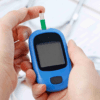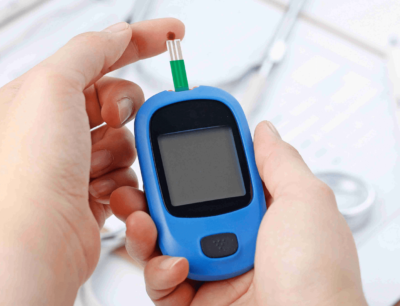
Stay Healthy, Stay Informed: Early Detection of Diabetes and Preventive Strategies
Uncontrolled diabetes is a serious condition and the worst is being unaware of one’s Diabetes!
Even in today’s world, diabetes is one of the most rapidly rising health problems worldwide affecting millions. The frightening part is that about half of the population having diabetes is diagnosed so late that people only find out they have the disease once they present complications. We all know diabetes is a chronic condition — but a quick diagnosis can help patients manage the disease and avoid dire health implications.
In this blog, we’ll explore the importance of recognizing early symptoms, understanding key risk factors like family history and lifestyle, and so on.
Let’s learn about diabetes:
What is Diabetes-
Diabetes is a long-term health condition that affects how your body turns food into energy. The pancreas makes a hormone—insulin—that helps the body use sugar (glucose) from food to enter cells where it can be used for energy. This is when the body either does not make enough insulin or cannot use it properly, leaving glucose in the blood and resulting in high levels of sugar.
It is an autoimmune disease characterized by the destruction of insulin-producing cells in the pancreas. While children and young adults are often diagnosed, this form can occur at any age.
Some diabetic patients do not actively seek medical attention for long periods, nor do they effectively manage the condition. This means that long-term risk factors for diabetes should also be managed.
Failure to identify the disease and treat it promptly implies that chances for complications are increased amid emergency treatment and rehabilitation. It therefore means that diabetes can prevent the use of rehabilitation equipment from the very beginning and throughout life. There are ways for patients to stay before the progression of diseases or further complications from diabetic retinopathy hence, why it is necessary to identify these risk factors and implement modern measures to prevent non-communicable diseases at the stage of their inception.
Common Signs of Undetected Diabetes
This group of individuals is typically unaware of their condition in most cases, as in the initial phases, diabetes is usually asymptomatic or only mild symptoms are present. However, there are certain key features that form an essential alert in such cases. In this case, when a person experiences any of the following signs, he or she should be tested and examined for diabetes.
Fatigue- A person can get too tired even when engaged in very light activities like short walks, and such unexplained weariness in the body is often one of the initial concerns of diabetes about the interactions of diabetes and tissues. It is typical in such cases for the body to seek intermittent starvation, resulting from a decreased use of glucose, in order to feed off fat instead.
Family History of Diabetes- If you are the child or sibling of a diabetic patient, your chance of contracting the condition is quite high. A family history of diabetes can be said to be one of the important reasons for which you should regularly monitor your blood sugar levels, more so if you have any other complaints at the same time.
Frequent Urination- The excess sugar in your blood leads to excess fluid intake to remove the sugar from concentrations in the blood. Therefore, you may notice that you are going to the restroom to pass urine every short while, even at night.
Increased Thirst– Excessive voiding of urine can lead to a lost thirst stimulus hence making one’s thirst wanting. However, if you answer yes to this question, even when increasing fluids, you still feel thirsty; you may have elevated blood sugars.
Other Symptoms to check
Even outside those common symptoms, other associated ones sometimes confound the diagnosis of diabetes. Here is a list of:
Unexplained Weight Loss: Despite normal food intake many people complain of weight loss because of the need for energy in the muscles and fat combustion on account of low insulin levels.
Blurred Vision: Due to excess sugar in the blood, damage may occur to the blood vessels that affect the eyes, leading to vision problems that may be temporary or permanent.
On-going Wounds: Diabetes also causes weak blood circulation and weak immune systems which also contributes to slow healing of any cut or sore.
Tingling or Numbness: Victims of diabetes are likely to suffer from neurological complications in most cases on their more distal regions encompassing hands or feet. This may present itself as a burning sensation, loss of sensation, or even discomfort.
Risk Factors for Diabetes-
Besides the symptoms presented, other risk factors in particular can augment the chances of having diabetes. Being aware of such factors would enable you to manage your health more effectively.
Age: The chances of having type 2 diabetes increase gradually as one advances in age, especially after one hits 45 years.
Weight: Weight gain as well as obesity are regarded as the most significant risk factors for being diagnosed with type 2 diabetes.
Sedentary Lifestyle: Lack of exercise can result in gaining excess weight coupled with increased insulin resistance which raises the susceptibility to diabetes.
Diet: Eating a lot of refined foods, sugar, and bad fats will make one obese and have metabolic complications.
Ethnicity: It has been recognized that some ethnic groups are more susceptible to diabetes primarily including but not limited to African Americans, Hispanic/Latino Americans, Native Americans, and even Asian Americans.
Taking Action: Early Testing and Diagnosis
If your risk of diabetes is high, or you have any of the symptoms mentioned above, it is important to be examined. Different forms of blood tests help in the diagnosis of diabetes:
Fasting Plasma Glucose Test (FPG) – Assesses the level of blood sugar taken in at least 8 hours of fasting.
A1C Test – Evaluates a person’s A1C in terms of blood glucose levels over two to three months even in diabetics.
Oral Glucose Tolerance Test (OGTT) – Measures the blood sugar concentration before and after glucose ingestion and assesses how the body handles glucose.
Early testing is especially very important when one has a family background or risk factors of being diabetic as the condition is caught at initial stages and managed well.
Diabetes Management: Lifestyle and Pharmacological Strategies
After diagnosis, it is important to manage diabetes by adopting some changes in life and accepting medical treatment since both work better than one alone. Here are remedies to manage diabetes and impede its aggressive progression.
Dietary practices and nutrition management-
Creative management of diabetes is finding a way of eating well-balanced nutritious meals. In this case:
Whole Grains: Replace sculpture grains with whole grains such as brown rice, quinoa, and whole wheat.
Healthy Fats: Avoid saturated fats and shift to unsaturated fats like those found in olive oil, avocados, and nuts.
Lean Proteins: Cut back on meat and begin learning sources of protein such source fish chicken beans legumes.
Fiber: Blood sugar levels are controlled by eating high fiber content foods such as vegetables fruits and legumes.
Avoid foods high in sugar, unhealthy fats, and processed carbohydrates, which can cause blood sugar spikes.
Regular Exercise
Bodily movements help in bringing down the glucose levels and thus give the body more insulin. Do moderate exercise for 30 minutes at least such as walking, swimming, or cycling on most days of the week.
Monitoring Blood Sugar
Through regular check-ups of your blood sugar, you can be sure how your body behaves with different foods, activities, and medications. Therefore, the possibility to be aware and to keep your blood sugar at an acceptable level is achieved.
Medications and Insulin
Depending on the kind and stage of your diabetes, your doctor might suggest the drugs to regulate the blood sugar counts. Some individuals with Type 2 diabetes may need insulin treatment if lifestyle corrections and the previously mentioned pills no longer keep their blood glucose level down.
Prevention Strategies
For those at risk of developing diabetes, there are several ways to prevent or delay its onset:
Keep Fit and Eat Healthily: Loss of a small amount of weight (5%-10% of your body weight) can significantly lower your chances of getting Type 2 diabetes.
Be Active: Besides weight management, exercise regularly also enhances insulin sensitivity.
Frequent Self-Monitoring: If you have prediabetes or other risk factors, doing regular blood sugar tests can assist you in the early detection of problems.
Summary
Diabetes is a potentially life-threatening disease, but early detection and aggressive treatment can significantly improve the quality of life and prevent further complications. Rapid action is required for any early symptoms of diabetes, for example, if you face fatigue, frequent urination, or excessive thirst, inform your healthcare provider promptly so that you can undergo the testing.
At Rasayana Bio, we are committed to raising awareness about diabetes and providing resources for those affected by the condition. Visit www.rasayanabio.com to learn more about how you can manage and prevent diabetes, and take control of your health today.


